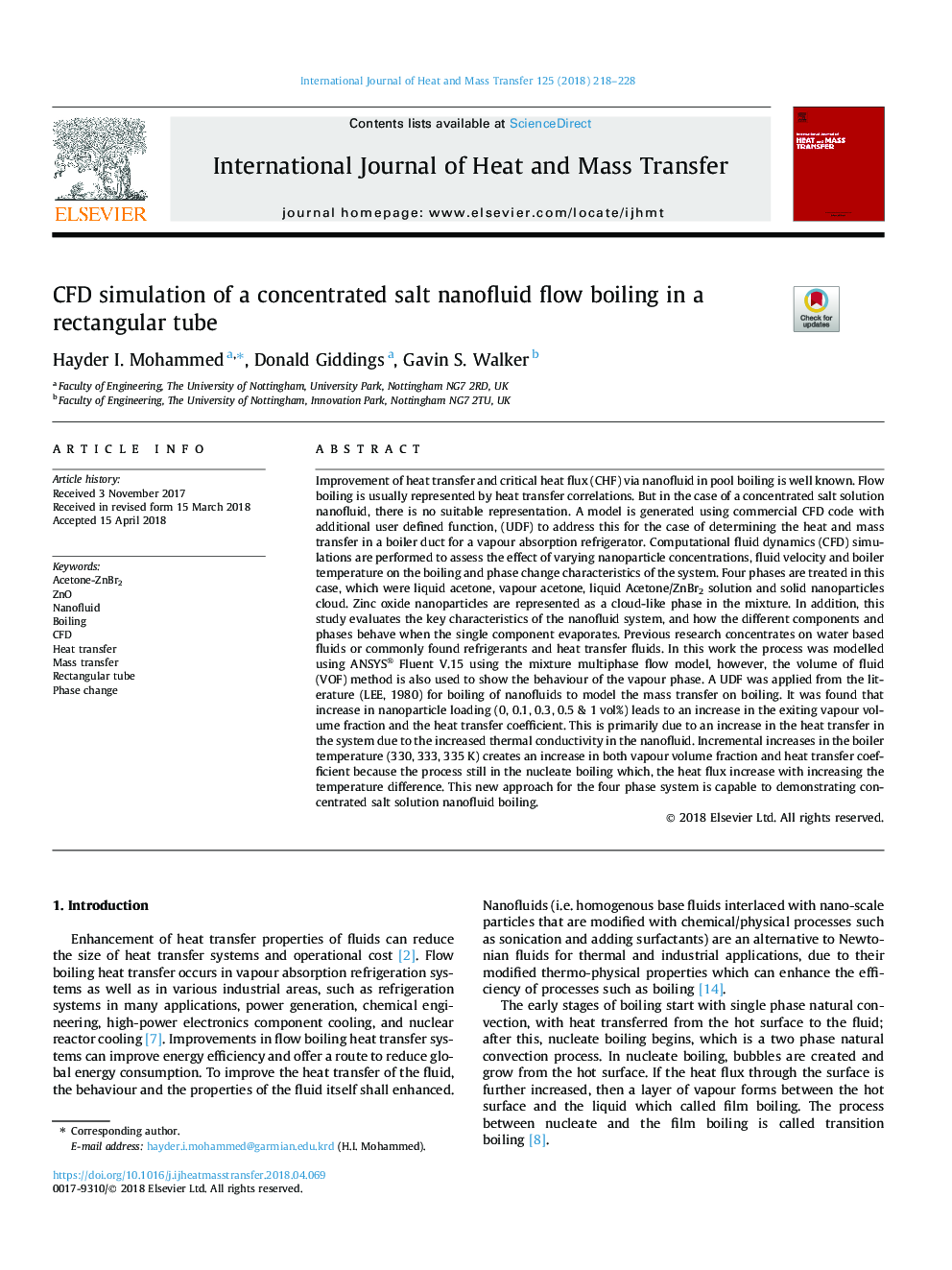| کد مقاله | کد نشریه | سال انتشار | مقاله انگلیسی | نسخه تمام متن |
|---|---|---|---|---|
| 7054028 | 1458015 | 2018 | 11 صفحه PDF | دانلود رایگان |
عنوان انگلیسی مقاله ISI
CFD simulation of a concentrated salt nanofluid flow boiling in a rectangular tube
دانلود مقاله + سفارش ترجمه
دانلود مقاله ISI انگلیسی
رایگان برای ایرانیان
کلمات کلیدی
موضوعات مرتبط
مهندسی و علوم پایه
مهندسی شیمی
جریان سیال و فرایندهای انتقال
پیش نمایش صفحه اول مقاله

چکیده انگلیسی
Improvement of heat transfer and critical heat flux (CHF) via nanofluid in pool boiling is well known. Flow boiling is usually represented by heat transfer correlations. But in the case of a concentrated salt solution nanofluid, there is no suitable representation. A model is generated using commercial CFD code with additional user defined function, (UDF) to address this for the case of determining the heat and mass transfer in a boiler duct for a vapour absorption refrigerator. Computational fluid dynamics (CFD) simulations are performed to assess the effect of varying nanoparticle concentrations, fluid velocity and boiler temperature on the boiling and phase change characteristics of the system. Four phases are treated in this case, which were liquid acetone, vapour acetone, liquid Acetone/ZnBr2 solution and solid nanoparticles cloud. Zinc oxide nanoparticles are represented as a cloud-like phase in the mixture. In addition, this study evaluates the key characteristics of the nanofluid system, and how the different components and phases behave when the single component evaporates. Previous research concentrates on water based fluids or commonly found refrigerants and heat transfer fluids. In this work the process was modelled using ANSYS® Fluent V.15 using the mixture multiphase flow model, however, the volume of fluid (VOF) method is also used to show the behaviour of the vapour phase. A UDF was applied from the literature (LEE, 1980) for boiling of nanofluids to model the mass transfer on boiling. It was found that increase in nanoparticle loading (0, 0.1, 0.3, 0.5 & 1â¯vol%) leads to an increase in the exiting vapour volume fraction and the heat transfer coefficient. This is primarily due to an increase in the heat transfer in the system due to the increased thermal conductivity in the nanofluid. Incremental increases in the boiler temperature (330, 333, 335â¯K) creates an increase in both vapour volume fraction and heat transfer coefficient because the process still in the nucleate boiling which, the heat flux increase with increasing the temperature difference. This new approach for the four phase system is capable to demonstrating concentrated salt solution nanofluid boiling.
ناشر
Database: Elsevier - ScienceDirect (ساینس دایرکت)
Journal: International Journal of Heat and Mass Transfer - Volume 125, October 2018, Pages 218-228
Journal: International Journal of Heat and Mass Transfer - Volume 125, October 2018, Pages 218-228
نویسندگان
Hayder I. Mohammed, Donald Giddings, Gavin S. Walker,